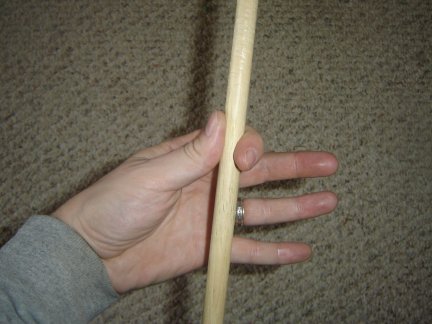How To Hold Drum Sticks
Contents
Knowing how to hold drum sticks should be one of the first things you cover when you learn How to Play the Drums. There are a couple different methods you can use to hold your sticks and neither hold is right or wrong. Just personal preference. This lesson will cover the Matched Grip hold. You may also want to learn How To Hold Drum Sticks Using the Traditional Grip

First, grab the sticks between the thumb and the middle of your index finger. Make sure to hold it about one third of the way up the sticks from the butt end. Don’t know which end is the butt? I cover all the parts of the drumstick and tell you how those parts effect the way the stick feels and play in my lesson on the Anatomy of a Drumstick.
Now, wrap your other fingers around to help control the sticks. I’ve seen some drummers drop their pinky off the stick so just use whatever feels best.
Finally, turn your hand so that the palm is down, facing the snare drum head. You are now ready to play.

There is also a variation on this grip. Instead of your palms facing down, they are turned in, so that your thumb is on top of the stick. I’ve heard it referred to as both “French” and “German” grip, but, not sure what the correct term is. I prefer the matched grip to the traditional grip as this method does make the stick somewhat easier to control (at least for me) and can be useful for certain situations.
It is great for the Flying Fingers technique since you can pull of this method with both hands in matched grip. You can still use flying fingers in traditional grip, but you limit yourself to only using your right hand. For many drummers this isn’t really a problem, but I feel the more you open up the possibilities the better. It also works well for a One Handed Snare Roll or Gravity Blast, which can also be played in traditional grip, but again you limit yourself to the right hand only. You won’t be able to ride the cymbal with your right hand while blasting with your left.
Now that you know how to hold drum sticks, you’re ready to see more Beginner Drum Lessons. Or, check out the Drum Stick page for more drumstick lessons or to purchase sticks.



New! Comments
Leave your comments below.